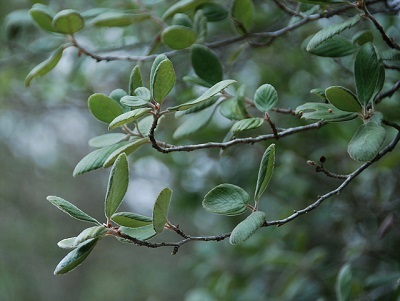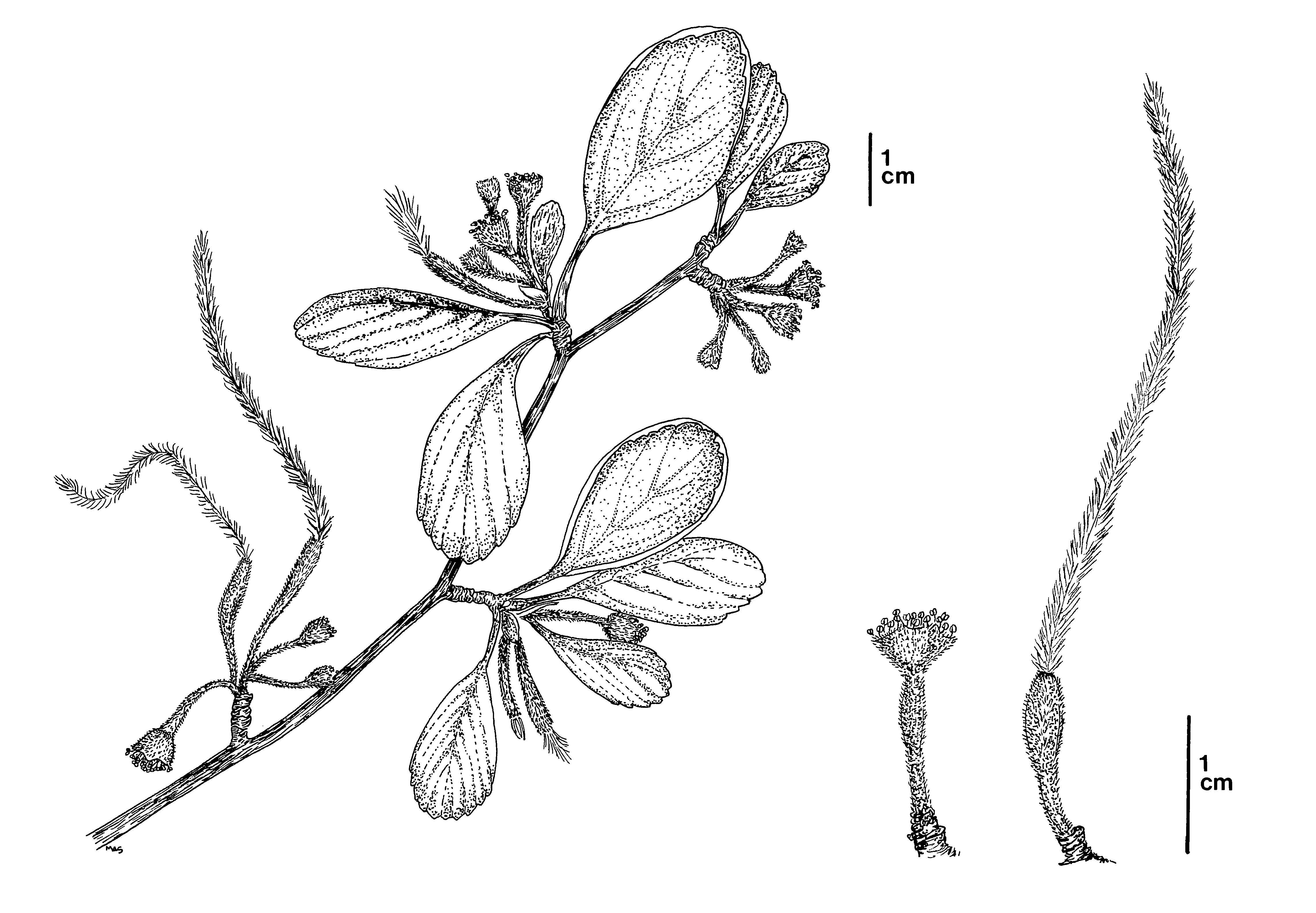Cercocarpus traskiae
 Cercocarpus traskiae. Photo © Pete Veilleux.
Cercocarpus traskiae. Photo © Pete Veilleux.
 Cercocarpus traskiae. CDFW illustration by Mary Ann Showers. (Click to enlarge)
Cercocarpus traskiae. CDFW illustration by Mary Ann Showers. (Click to enlarge)
Catalina Island mountain-mahogany is a California endangered plant species, which means that killing or possessing the plant is prohibited by the California Endangered Species Act (CESA). The species is also listed as endangered under the federal Endangered Species Act(opens in new tab). Catalina Island mountain-mahogany is an evergreen tree or shrub in the rose family (Rosaceae) that grows up to 15 feet tall and has dark green, leathery leaves that are hairy on the bottom. Catalina Island mountain-mahogany can take several years to start reproducing and does not reproduce every year. It is one of nine plant species that grow exclusively on Santa Catalina Island, the third largest of the Channel Islands. The plant grows on dry rocky soils derived from the igneous rock that makes up a large portion of the island. Catalina Island mountain-mahogany is typically found on steep slopes and near drainage basins, and is often found with black sage (Salvia mellifera), lemonadeberry (Rhus integrifolia), and toyon (Heteromeles arbutifolia).
Catalina Island mountain-mahogany was once abundant on Catalina Island, but grazing pressures from introduced herbivores resulted in a decline of seedling survivorship and adult reproductive success. Grazers such as goats, mule deer, and pigs contributed to the decrease in population numbers and led Catalina Island mountain-mahogany to be named one of the rarest shrubs in North America. At the time it was listed in 1982, less than ten pure individuals of Catalina Island mountain-mahogany were known to exist. A population this small is vulnerable to natural catastrophes such as fire and landslides. Fencing installed in 1999 by the Catalina Island Conservancy greatly reduced grazing pressures of introduced herbivores and allowed some successful seedling establishment.
Catalina Island mountain-mahogany is also threatened by hybridization with Island mountain mahogany (Cercocarpus betuloides var. blancheae), which could lead to a loss of pure individuals. There is little evidence that any of the pure individuals of Catalina Island mountain-mahogany are reproducing and establishing new individuals successfully without protection or assistance. Genetic research conducted in 1995 identified the remaining pure individuals of Catalina Island mountain-mahogany and genetically differentiated them from the hybridized individuals. Under a permit issued by the California Department of Fish and Wildlife, Catalina Island Conservancy worked in collaboration with the Rancho Santa Ana Botanic Garden to propagate cuttings of pure individuals of Catalina Island mountain-mahogany. They intended to plant the cuttings in suitable habitat on Santa Catalina Island, but were unsuccessful in getting the cuttings to root.
Inconsistent monitoring of Catalina Island mountain-mahogany has resulted in a lack of understanding of environmental requirements and reproductive biology. The U.S Fish and Wildlife Service recommends the establishment of an effective seed banking program for Catalina Island mountain-mahogany to maintain the genetic diversity of the remaining individuals. Continued research, propagation, and out-planting will be necessary for Catalina Island mountain-mahogany to persist.
CDFW may issue permits for Catalina Island mountain-mahogany pursuant to CESA, and you can learn more about California laws protecting Catalina Island mountain-mahogany and other California native plants. Populations of Catalina Island mountain-mahogany occur in CDFW’s South Coast Region. More information is also available from the U.S. Fish and Wildlife Service Species Profile for Catalina Island mountain-mahogany(opens in new tab).
Updated 6/23/2017